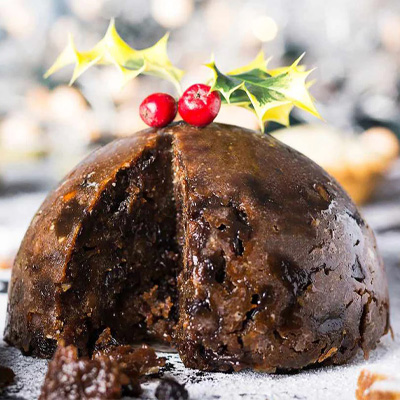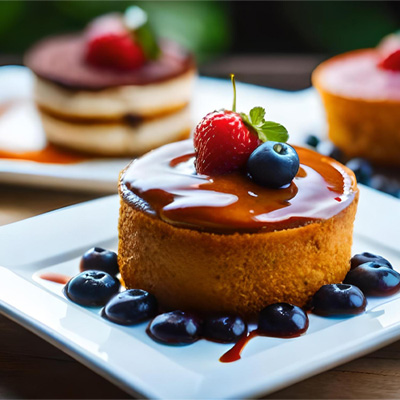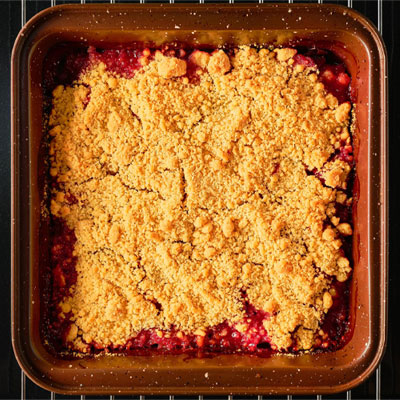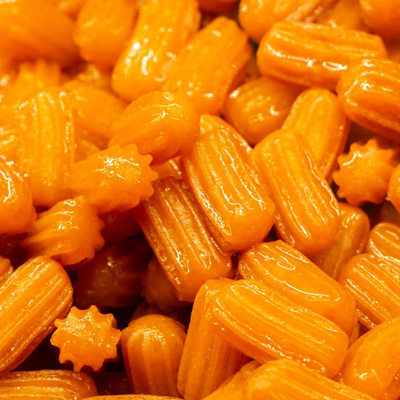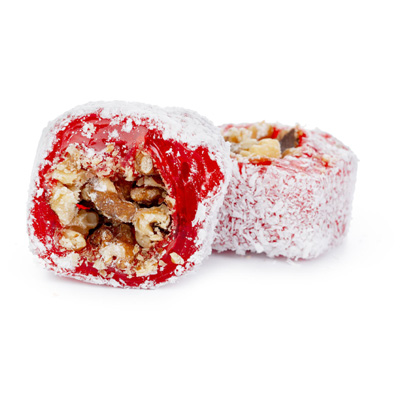The croissant, with its delicate layers and buttery aroma, is a pastry that embodies the epitome of French baking. A work of culinary artistry, it has captured the hearts of food enthusiasts worldwide. In this article, we delve into the world of croissants, from their origin story to the secrets behind achieving the perfect flakiness. Join us on a journey of buttery indulgence and irresistible charm.
Nutrition Facts
- Kcal
240 - Fat
12 g - Choles
30 mg - Sodium
300 mg - Carbs
29 g - Fiber
1 g - Sugar
4 g - Protein
4 g
Note: The nutrition facts are approximate values and may vary based on the specific ingredients used and any additional toppings or syrups added.
Ingredients
For the Dough
- 1 and 1/4 cups (300ml) warm milk
- 2 and 1/4 teaspoons active dry yeast
- 1/4 cup (50g) granulated sugar
- 4 cups (500g) all-purpose flour, plus more for dusting
- 1 teaspoon salt
- 1 and 1/4 cups (280g) unsalted butter, cold
For the Egg Wash
- 1 egg
- 1 tablespoon milk
Directions
- In a bowl, combine warm milk, active dry yeast, and granulated sugar. Let it sit for about 5-10 minutes, until frothy.
- In a large mixing bowl, whisk together the flour and salt.
- Pour the yeast mixture into the flour mixture and stir until a dough forms.
- Turn the dough onto a floured surface and knead for a few minutes until smooth.
- Shape the dough into a rectangle and wrap it in plastic wrap. Chill in the refrigerator for 1 hour.
- While the dough is chilling, flatten the cold butter between two sheets of parchment paper into a rectangle about half the size of the dough.
- Roll out the chilled dough on a floured surface into a larger rectangle.
- Place the butter rectangle on one half of the dough and fold the other half over the butter. Seal the edges.
- Roll out the dough-butter mixture into a rectangle, then fold it into thirds like a letter. This is one fold.
- Repeat step 9 for a total of 3 to 4 folds. Chill the dough for 30 minutes between each fold.
- After the final fold, chill the dough for at least 1 hour or overnight.
- Roll out the chilled dough into a large rectangle, then cut it into triangles.
- Roll each triangle from the base towards the tip to form croissants.
- Place the croissants on a baking sheet lined with parchment paper. Cover loosely with plastic wrap and let them rise for 1-2 hours, until puffy.
- Preheat the oven to 375°F (190°C).
- In a small bowl, whisk together the egg and milk for the egg wash.
- Brush the croissants with the egg wash.
- Bake the croissants for 15-20 minutes, or until golden brown and flaky.
- Allow the croissants to cool slightly before serving.
A Brief History of Croissants
The croissant's origins can be traced back to Vienna, Austria, where a similar pastry known as "kipferl" existed as early as the 13th century. The kipferl was crescent-shaped and made its way to France when Austrian princess Marie Antoinette married King Louis XVI. Over time, French bakers refined the recipe, resulting in the croissant as we know it today.
Crafting the Perfect Croissant
The allure of a croissant lies in its unmistakable layers of flaky goodness. Achieving that perfect texture requires precision and patience. Here's a glimpse into the meticulous process of crafting a croissant:
The Croissant Experience
Savoring a croissant is an experience that engages the senses in a symphony of flavors and textures. As you bite into its crisp, golden exterior, you're met with a soft, airy interior that practically melts in your mouth. The subtle buttery sweetness dances on your palate, leaving a lingering satisfaction that's hard to match.
Beyond the Classic Croissant
While the classic plain croissant is a masterpiece in its own right, bakers have embraced creativity, offering a plethora of variations to tantalize taste buds. Here are a few delightful twists on the traditional croissant:
-
Almond Croissant
Filled with almond paste and topped with sliced almonds, this variation adds a delightful crunch and nutty flavor.
-
Chocolate Croissant
Also known as pain au chocolat, this croissant is filled with chocolate and offers a delectable balance of buttery pastry and rich cocoa.
-
Ham and Cheese Croissant
For a savory twist, croissants can be filled with ham and cheese, creating a satisfying blend of flavors.
-
Fruit-Filled Croissant
Croissants filled with seasonal fruits or fruit preserves offer a delightful contrast of sweet and flaky.
FAQs about Croissants
What's the secret to achieving flaky layers in a croissant?
A: The key lies in the process of folding and rolling the dough multiple times, which creates distinct layers of butter and dough.
Can I make croissants without a stand mixer?
A: Absolutely! While a stand mixer can expedite the process, you can knead the dough by hand for equally satisfying results.
Can I freeze croissant dough for later use?
A: Yes, you can freeze croissant dough after the initial folding and rolling stages. Thaw it in the refrigerator before shaping and baking.
Are croissants best enjoyed warm or at room temperature?
A: Croissants are often enjoyed best shortly after baking when they're warm and at their flakiest.
Conclusion
The croissant is a culinary masterpiece that has captured hearts and taste buds for centuries. Its delicate layers, buttery richness, and inviting aroma make it an indulgence that transcends cultures and borders. Whether enjoyed as a classic morning treat or a creative variation, the croissant remains a symbol of artistry and a testament to the joys of fine baking.



